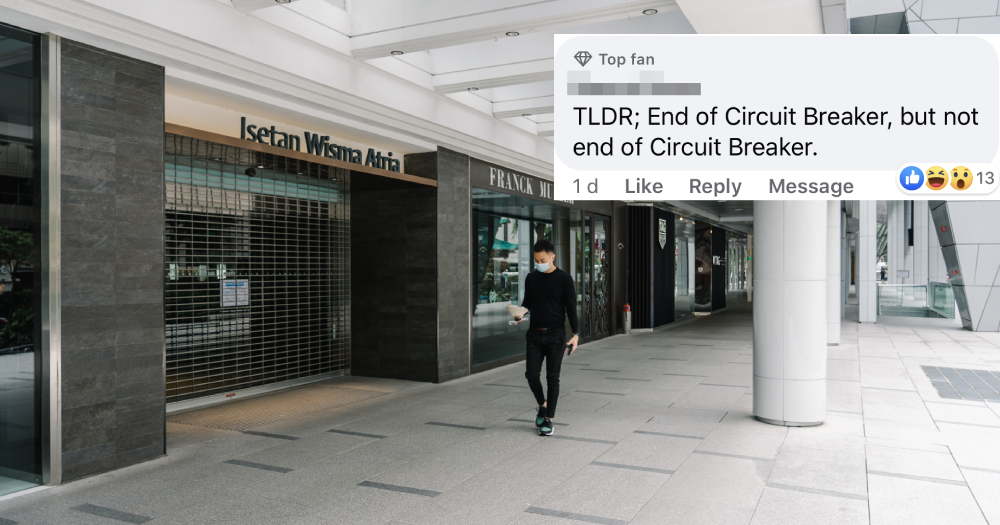On June 1 at 11:59pm, Singapore will finally commence its "exit" from Circuit Breaker (CB).
Some of us will from June 2 be back at our workplaces. Younger children will return to infant care, childcare and preschool centres, and students will be heading back to school, albeit staggered across different weeks.
We'll also be able to get our pets groomed and our hair dyed.
We’ll even be able to visit our parents and grandparents once a day, as long as there are just two people from a household doing so.
These will all be part of the government’s Phase One — which they’ve termed “Safe Re-opening” — of life after CB.
But if you happen to be like us, you might be finding this all just a little (or perhaps more than a little) anticlimactic.
After all, for many of us, being cooped up in our homes just under two months, what the announcements appear to be saying is that the next four weeks, and very possibly more, simply looks like more of the same.
A quick look at some of the comments greeting the news of the CB’s end on Mothership’s Facebook page shows that at least a few others agree:
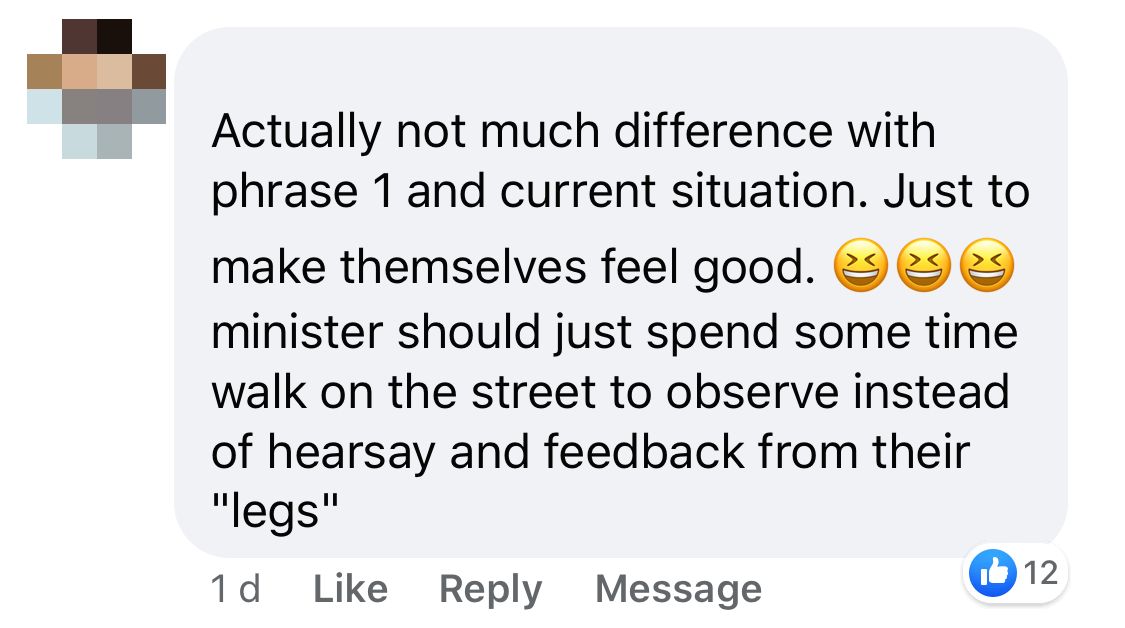


So why do we feel disappointed?
It can be tempting to brand commenters like these among the group of Singaporeans who will never be satisfied no matter what the government does.
But when we thought about it, we realised that there is a range of reasons that can explain where they're coming from.
1. A perceived inability on the government's part to "call a spade a spade"
The first might be the way Singapore’s Covid-19 response has been framed for us.
On Apr. 3 when the CB was first announced, Minister for National Development and co-chair of the government’s multi-ministry taskforce (MTF) on Covid-19 Lawrence Wong denied that the measures equated to a lockdown, saying:
“Rather than use the term ‘lockdown’, which means different things to different people, let’s focus on the specific measures. What we are doing today is a significant tightening on top of what we have just introduced last week because we think this is necessary […] but it is certainly a very stringent set of measures that will impose more restrictions on people’s movements.”
After all, he elaborated back then, there is indeed a technical difference between this CB and a lockdown:
"We are not stopping all work, we're not shutting down the economy. Essential businesses will continue. We are not stopping people from going out if they really need to."
Certainly, there is logic and precision in Wong's explanation. But it seems prettttty unlikely Singaporeans quite completely appreciated or understood that nuance.
For most, life is in fact in lockdown. They are unable to meet friends or leave the house — unless it is for limited essential purposes or exercise — and many jobs and livelihoods (think retail, almost everyone in the travel and tourism sector for starters) have been put on the backburner, deemed to be "non-essential" but impossible to do from home.
That's probably a big part of why the CB’s June 1 expiry was hotly anticipated; in the minds of those who’ve had their lives turned upside down, it represented a glimmer of hope for a change of direction towards normalcy.
But what we're all getting instead looks to be a very gentle easing of restrictions — so gentle, in fact, that it doesn't seem to make a difference for many of us.
Perhaps we would have been less disappointed if the MTF had just said that the CB was extending with some of its restrictions eased.
2. The lack of clearly-defined time frames for the three post-CB phases
An estimated one-third of Singapore's workforce will return to on-site work from Jun 2. Chiefly, these are the workers who need specialised equipment, or who execute transactions to meet legal requirements – those jobs cannot be done at home.
However, workers who are able to work from home must continue with that, according to Minister for Trade and Industry Chan Chun Sing, at a May 19 press conference.
This means that there are many (including those currently working from home) who will not experience a change when June 1 rolls into June 2 and we move from CB into Phase One.
For them, the "end" of the CB will carry little significance except for the fact that they can now visit parents and grandparents, and the fact that there is no longer a concrete end date to look forward to.
While the lack of definite time frames is perfectly understandable (especially in the case of Phase 3, which will continue till there is a Covid-19 vaccine), it is significantly different from the clear two-month time frame we were given for CB.
And the lack of clarity and certainty is understandable too — given the changing circumstances of the situation, the need to observe how cases in the community trend and how the virus evolves, as well as the increase in knowledge scientists are gathering about it — but it doesn't make it any easier to accept or stomach the lack of something clear to work towards or look forward to.
3. A perception of shifting goalposts
Some of us may also have felt like we did all we could to follow the rules, having waited out the circuit breaker period patiently and obediently, only to discover that the end-points we were working toward and planning for have changed.
This happened with the CB itself, which was initially slated to end on May 4, only to be extended by a month till June 1.
It also happened with the tighter measures (including the closure of bubble tea shops and home-based businesses initially) that were implemented midway through CB and subsequently extended on May 2.
Now, the extension of CB and the tighter measures are completely justifiable: to keep local transmission to a minimum and prevent Singapore's healthcare system from being strained.
However, there’s no denying that in some way, the goalposts did shift — a necessary evil that created immense uncertainty for individuals, businesses, and entire economic sectors.
But... should we have expected any different?
That being said, perhaps all of us simply ought to have known better than to expect to be able to start dining out at our favourite restaurants with friends or our other halves, or indeed even our extended families, in person from June 2.
For weeks, our ministers have been hinting at and preparing Singapore for a “gradual” reopening — maybe we were all just in denial about how "gradual" it was going to be.
“It’s going to be a gradual process beyond the circuit breaker period.”
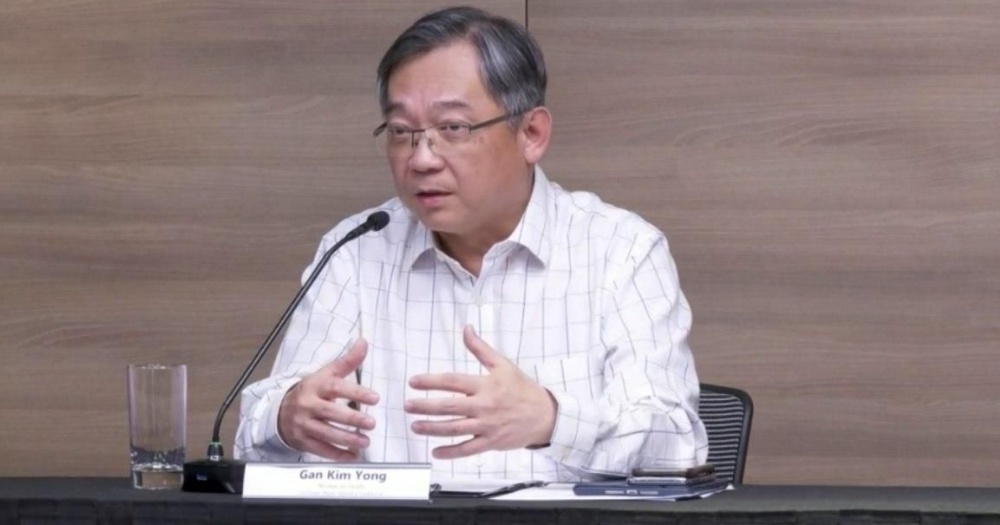 Image from CNA Live.
Image from CNA Live.
Health Minister Gan Kim Yong said this on Apr. 14:
“We should not have the idea that, ‘at the end of the circuit breaker, everything will revert back to normal and we don’t have to wear masks anymore, we don’t have to have safe distancing anymore’. I think many of these measures, even if we were to relax them, it’s going to be a gradual process beyond the circuit breaker period.”
This sentiment was echoed on many occasions by many of our key leaders:
- PM Lee, Apr. 21: “We must open up incrementally, in small steps, making sure that we are safe each step of the way.”
- Chan Chun Sing, May 3: “... we work towards progressively opening up our economy.”
- Gan Kim Yong, May 4: "We will still need to open up in a phased and calibrated manner, to avoid a second wave of outbreak.”
- Lawrence Wong, May 8: “Things like safe distancing measures, wearing of masks when you go out, or at work, all of these will remain post-June 1. There's no doubt about that."
Looking back from where we are now, with what Wong might call "the luxury of the benefit of hindsight", it almost seems silly (a sad realisation, we do admit) for us to have expected the end of CB to look all that different from what we will be going through starting June 2.
While we might be dissatisfied with how the CB is ending, we will be even more upset if it has to return.
And here's the sledgehammer, as if everything we've already said isn't disappointing enough: the CB as we now know it can absolutely return.
Wong: Circuit breakers can be applied “from time to time”
It was on Mar. 10 that the idea of a circuit breaker was first mentioned by Minister Lawrence Wong, who said:
“it is useful to think of this broad sweep of social distancing measures as something we can apply from time to time, as circuit breakers throughout the entire epidemic cycle."
It's worth bearing in mind that on that day, we were only at 166 confirmed Covid-19 cases at the time. That day saw a whopping six new cases uncovered and reported by the MOH.
Yes, that was a very different time, but even then, the idea of closures and restrictions in a “broad sweep” had already been on the table.
Gan is already looking ahead to a return of CB
And here's another point to consider: even before this first CB comes to an end, we observe that our leaders are already thinking about a next one — or at least, a rollback on the easing off of movement restrictions.
Health Minister Gan Kim Yong said on May 12 that a spike in cases at our first steps of exiting CB would mean that some original CB measures that are lifted may have to be reintroduced.
No one can predict when the next CB will kick in, and everyone hopes one won’t be necessary.
But it would be unwise to pretend that there isn’t a chance of another CB happening — or its return with some newfangled shape, form or name — in a future sooner than we would like.
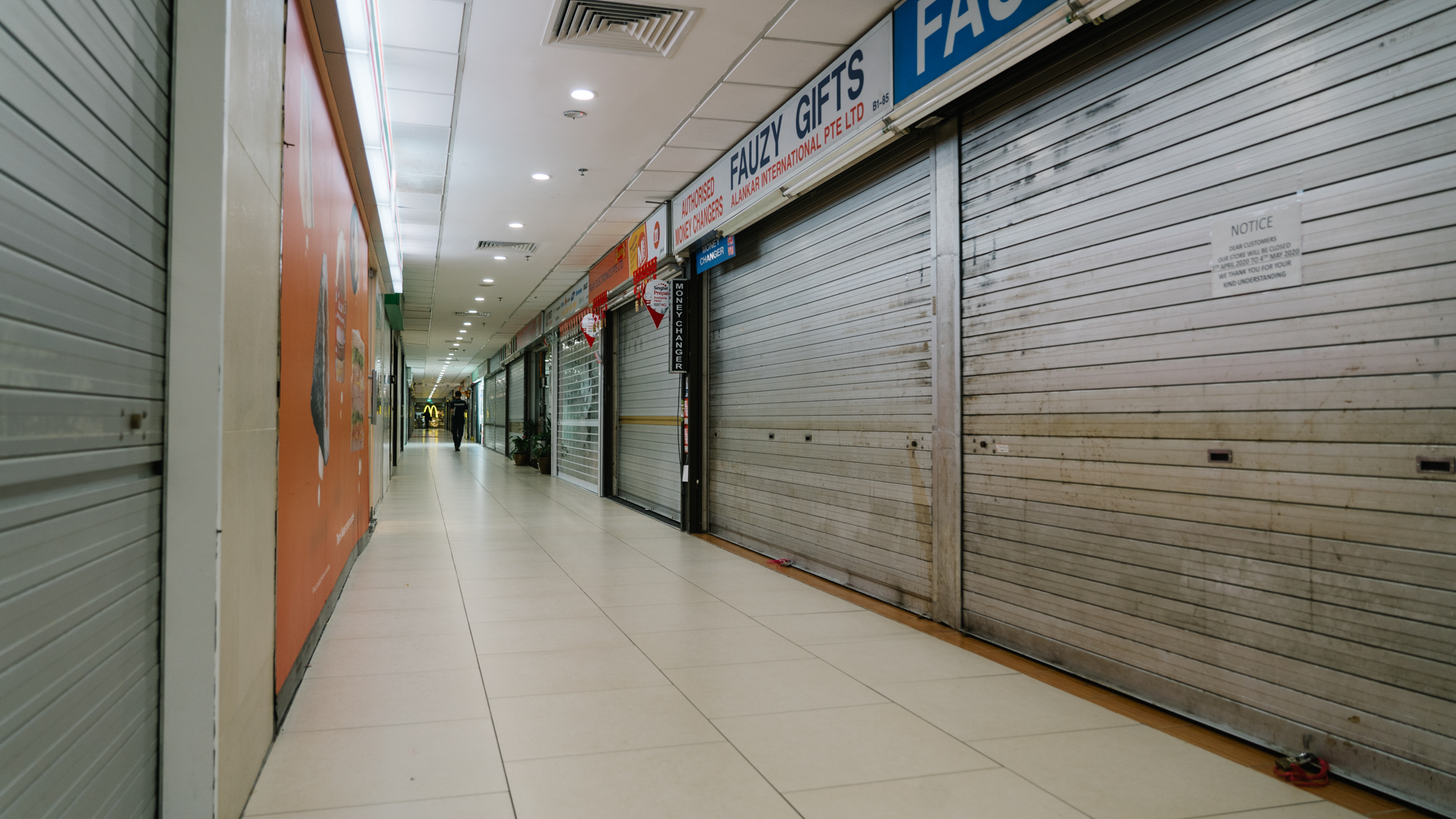 Image by Andrew Koay.
Image by Andrew Koay.
Remember the "hidden reservoir" of cases in our community?
Beyond the disappointment we might feel about all this following this rather depressing analysis, there are reasons why we might not actually want more restrictions to be relaxed from June 2.
This is because of how the CB, while seemingly successful so far, was never meant to eradicate Covid-19 here, as a possible “hidden reservoir” of cases, mentioned first by PM Lee in his latest address to the nation, seems to persist.
This concept was elaborated upon by local infectious disease expert Dr Leong Hoe Nam too:
What was the CB meant to do?
So yes, the CB's measures have succeeded in helping Singapore meet the government's criteria for it to be lifted by the date imposed.
But understanding what it was intended to do will reveal to us that this "success" does not mean Singapore has succeeded in containing Covid-19.
Interestingly, this WhatsApp chain message captures this point surprisingly well — perhaps one of the ones actually worth forwarding to your aunts and uncles:
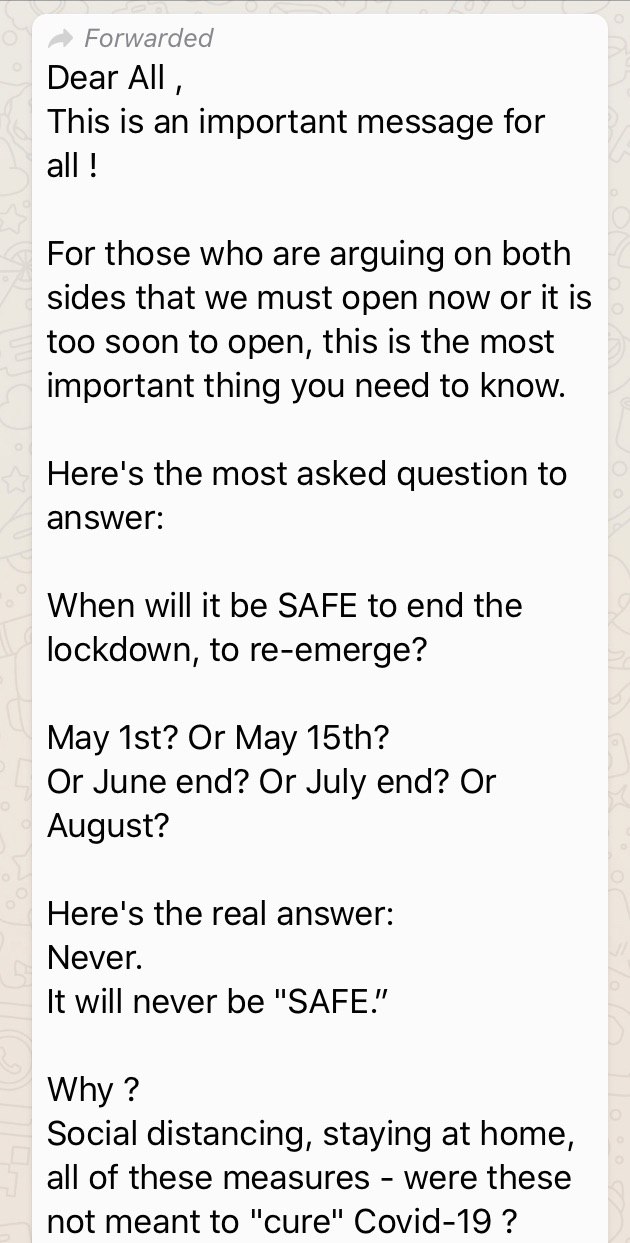
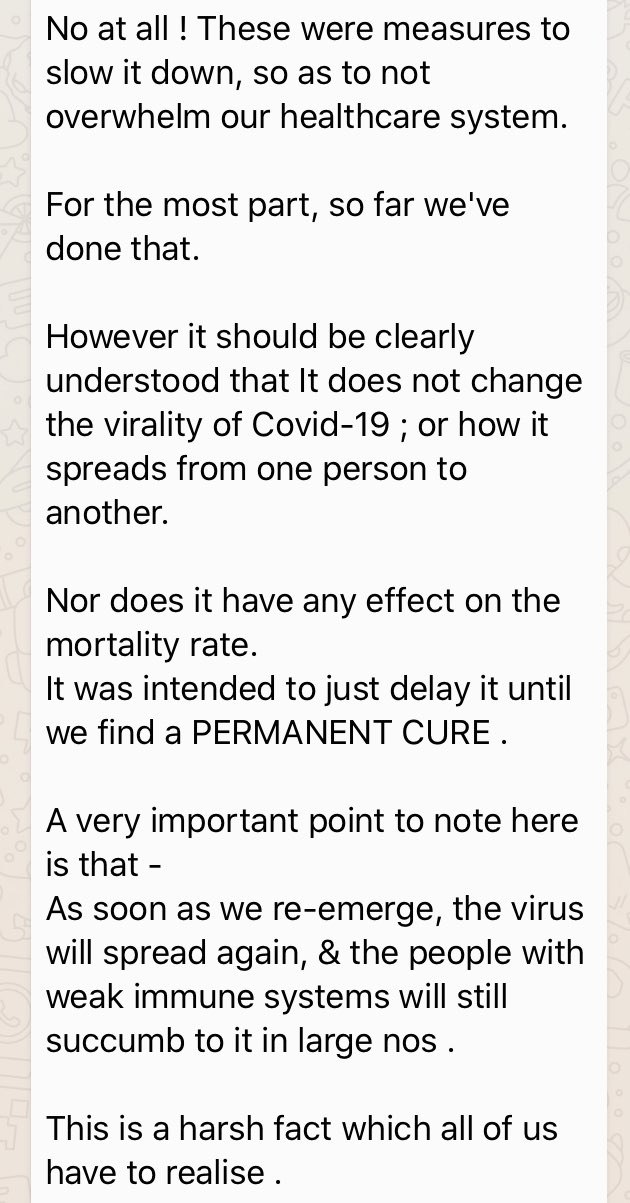
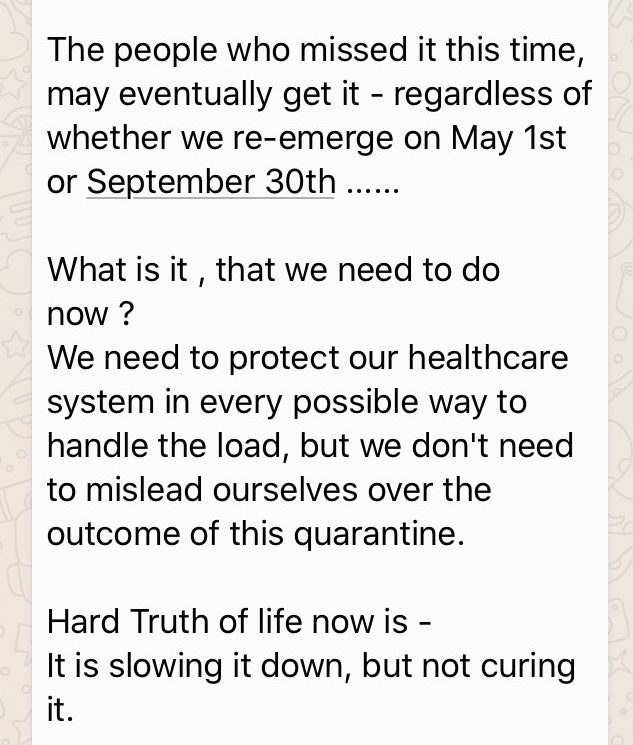
New cases among preschool teachers, “hidden reservoir” definitely still there
So back to our "hidden reservoir" of Covid-19 cases in the community, which is the source of our 613 unlinked cases that exist here currently (as of Monday, May 25 as per MOH's Covid-19 situation report), which we have not detected.
We do have evidence that it continues to exist: The Early Childhood Development Agency (ECDA) announced on May 23 that seven preschool staff tested positive for Covid-19 from proactive testing of all staff ahead of preschools reopening from June 2.
And just one of these can turn into a cluster, with a new one among four residents of Orange Valley Nursing Home's Simei branch having just been uncovered as recently as on May 21.
It’s no wonder things are the way they are.
Better late than never having to do and undo
We also have to keep in mind examples of other countries where premature easing of lockdowns had to be reversed.
South Korea was one that lifted its movement restrictions, only to find its new reported cases to spike.
According to the AFP, the country eased social distancing rules on May 6 having successfully flattened its curve initially.
These started as early as in late April:
But a new cluster involving a string of nightclubs in Seoul’s Itaewon area surfaced soon after, signalling a second wave of infections in the country.
By May 22, the cluster had swelled to over 215 people, and was the source of secondary and tertiary infections not just in Seoul but across the country, according to the Korea Herald.
South Korea is just one of a few examples of cities and countries reopening only to experience a surge in cases have been seen over the last few weeks.
Wuhan, the city where the virus is understood to have originated, declared itself free of Covid-19 on April 26.
The lockdown of the city was also lifted in early April when spread of the virus seemed to be under control.
Yet, a new cluster of cases emerged there on May 11.
Another sobering reminder of what could happen if restrictions are eased too early is the Japanese region of Hokkaido, which initially lifted its state of emergency on Mar. 19 amid a struggling economy, according to Time.
Unfortunately, a second wave of infections hit the island even harder; 279 new cases of Covid-19 were reported after the restrictions were eased — an 80 per cent increase in cases.
Hokkaido was eventually forced back into lockdown 26 days later on April 14.
A glimmer of hope in New Zealand?
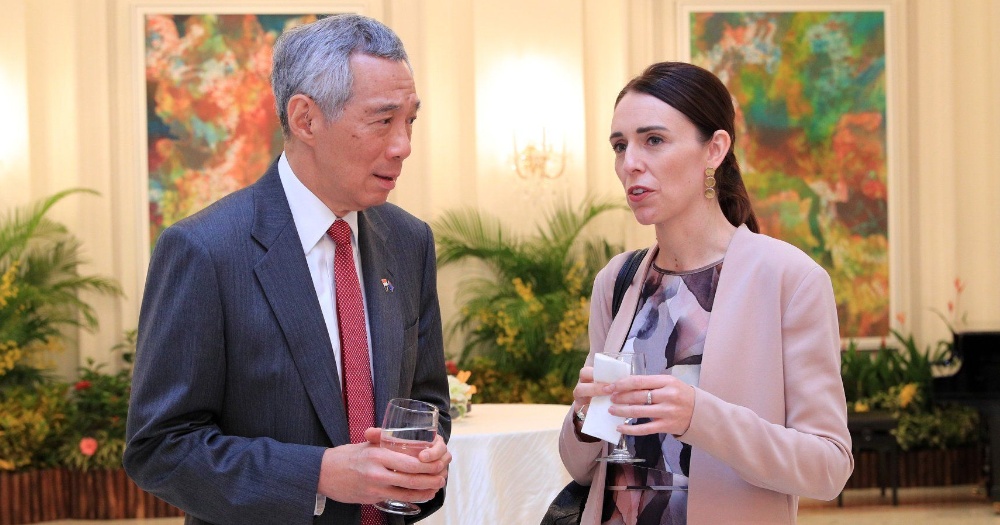 PM Lee and New Zealand prime minister Jacinda Ardern. Top image courtesy of Kenji Soon, via MCI.
PM Lee and New Zealand prime minister Jacinda Ardern. Top image courtesy of Kenji Soon, via MCI.
It may be some distance away, but New Zealand may offer us a glimmer of hope for what Singapore's safe reopening might look like.
On April 27, the country’s prime minister Jacinda Ardern announced its success in bringing the virus under control, according to The Guardian.
The announcement coincided with the relaxation of the country’s lockdown which saw retailers, restaurants, and schools reopening on a smaller scale.
At the time, Ardern was quoted by The Guardian as saying "We are opening up the economy, but we’re not opening up people’s social lives."
Data from New Zealand’s Ministry of Health shows that the number of new infections in the country remained low thereafter, and eventually restrictions were brought down a notch again on May 14.
Today, people in New Zealand are allowed to do many of their "everyday activities" and gather for social reasons in groups no larger than 10, according to the government’s guidelines.
All businesses that can operate in a safe manner have been given the clearance to reopen, though telecommuting is still encouraged.
Despite all this, Covid-19 infections in New Zealand have remained low, often going multiple days in a row with zero new infections, all while continuing to maintain their levels of testing.
It is an enviable position for sure, and one that we might hope to find ourselves back in, perhaps when Phase Two eventually arrives.
That means that at the moment, we might just have to swallow our disappointment and allow Singapore's restrictions to roll back as slowly as needed.
After all, going backwards in the form of retightening restrictions might be an even harder pill to stomach.
Related story:
Mothership Explains is a series where we dig deep into the important, interesting, and confusing going-ons in our world and try to, well, explain them.
This series aims to provide in-depth, easy-to-understand explanations to keep our readers up to date on not just what is going on in the world, but also the "why's".
Top image by Andrew Koay
If you like what you read, follow us on Facebook, Instagram, Twitter and Telegram to get the latest updates.
